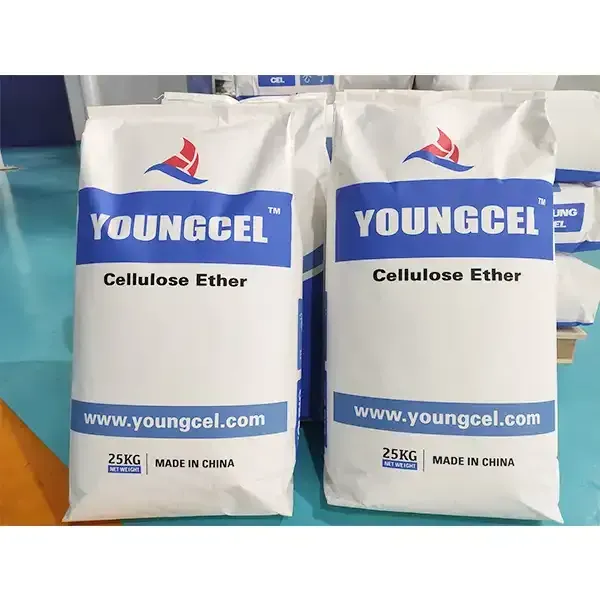Understanding Hydroxypropyl Methylcellulose (HPMC) Applications and Benefits
Hydroxypropyl Methylcellulose (HPMC) is a semi-synthetic polymer derived from cellulose, an abundant natural polymer. Its unique properties make it a versatile ingredient widely used in various industries, such as pharmaceuticals, food, construction, and cosmetics. This article delves into the chemical structure, properties, applications, and benefits of HPMC.
Chemical Structure and Properties
HPMC is produced by modifying cellulose through the introduction of hydroxypropyl and methyl groups. The resulting compound is a white, odorless powder that is soluble in both hot and cold water, forming a clear, viscous solution. It does not gel upon cooling, making it distinct from some other cellulose derivatives.
The degree of substitution, which refers to the average number of hydroxyl groups replaced by hydroxypropyl or methyl groups, influences the solubility and viscosity of HPMC. This variability allows manufacturers to tailor HPMC to meet specific requirements for different applications. Its chemical stability, resistance to acids and bases, and film-forming ability enhance its functionality across various sectors.
Applications in Pharmaceuticals
One of the most significant applications of HPMC is in the pharmaceutical industry. It acts as an excipient in drug formulations, serving multiple roles. HPMC can be used as a binder in tablets, helping to hold ingredients together, or as a thickening agent in liquid formulations. Additionally, its ability to form controlled-release matrices allows for the gradual release of medications, enhancing therapeutic efficacy and patient compliance.
Moreover, HPMC is often employed as a coating agent to improve the stability and appearance of tablets. The coating can protect sensitive ingredients from degradation and mask unpleasant tastes, making medications more palatable for patients.
Use in Food Industry
In the food industry, HPMC serves as a thickening, emulsifying, and stabilizing agent. It is commonly found in gluten-free products, where it enhances texture and moisture retention, mimicking the qualities that gluten imparts in traditional baked goods. HPMC can also improve the mouthfeel of beverages, sauces, and dressings, contributing to a more enjoyable consumer experience.
hydroxypropyl methyl cellulose hpmc

Additionally, HPMC is labeled as a food additive and is recognized as safe by regulatory bodies such as the FDA. Its versatility makes it an attractive choice for manufacturers aiming to create healthier, low-fat, or gluten-free food options without compromising texture or taste.
Application in Construction
In the construction industry, HPMC is utilized as an essential component in cement, mortar, and tile adhesives. Its water-retention properties ensure that the mixture remains workable for extended periods, allowing for better application and adhesion. This characteristic is particularly beneficial in environments with varying humidity and temperature, where traditional mixtures may dry too quickly.
Furthermore, HPMC contributes to improved flexibility and crack resistance in building materials, leading to longer-lasting construction. Its easy dispersibility and ability to enhance strength make it a valuable additive for professionals seeking high-quality construction materials.
Benefits in Cosmetics
The cosmetic industry also benefits greatly from HPMC. It is used as a thickener and stabilizer in creams, lotions, shampoos, and other beauty products. HPMC helps improve the viscosity of formulations, ensuring they are easy to apply and absorb well into the skin or hair.
Moreover, due to its film-forming properties, HPMC is often included in products designed for long-lasting wear, such as makeup and hair styling products. Its non-toxic and hypoallergenic nature makes it suitable for sensitive skin applications, further broadening its appeal in cosmetic formulations.
Conclusion
Hydroxypropyl Methylcellulose (HPMC) is a multifunctional and versatile polymer that plays a crucial role in various industries. Its unique properties, including solubility, thickening ability, and film-forming characteristics, make it an essential ingredient in pharmaceuticals, food, construction, and cosmetics. As the demand for safer, healthier, and more effective products continues to rise, the significance of HPMC is expected to grow in numerous applications, emphasizing the importance of this remarkable cellulose derivative in modern industry.
-
Rdp Powder: Key Considerations for Wholesalers in the Building Materials IndustryNewsJul.08,2025
-
Key Considerations for Wholesalers: Navigating the World of Hpmc - Based ProductsNewsJul.08,2025
-
Hpmc Detergent: Key Considerations for WholesalersNewsJul.08,2025
-
Key Considerations for Wholesalers: China Hpmc For Tile Adhesive, Coating Additives, Concrete Additives, and MoreNewsJul.08,2025
-
Crucial Considerations for Wholesalers: Navigating the World of Construction MaterialsNewsJul.08,2025
-
Key Considerations for Wholesalers Sourcing Additive For Cement, Additive For Concrete, Additive For Putty from Additive Manufacturer Shijiazhuang Gaocheng District Yongfeng Cellulose Co., Ltd.NewsJul.08,2025




